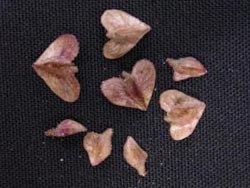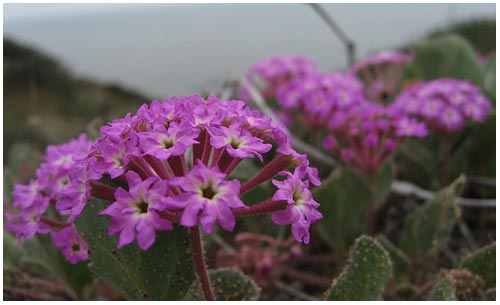Dispersed or extinct?
According to a professor at the Queen's University, plants living in areas outside their natural habitat are unlikely to improve their viability when global temperatures rise.
Thanks to new research conducted by Queen's team of scientists, the most seasoned tree and also the most capable species of the climate change period due to global warming could easily identified.
Biology professor Christopher Eckert at Queen's University said: 'Predicting the migration rate of plants when climate warming may be the key to their survival.'

Plants live in confined areas with large wings.(Photo: Queen's University)
The number of plants growing in areas outside their natural geographical range lies in a temporary balance between the extinction of existing plant populations and the discovery of new populations thanks to the sugar disperses seeds to appropriate environments but is abandoned.
Dr. Eckert said: 'Policymakers mention conservation of plants and should not only focus on conserving the species of living species but also where they may appear in the future.' .
This stems from his recent research published in the New Phytologist scientific journal, the first to address the problem of natural selection that promotes the formation of scattering characteristics of plants. live outside their natural territory.
Dr. Eckert explains, if species want to deal with climate change, they must migrate to the climate most suitable for development. The ability to move corresponding to climate change in the region due to global warming depends mainly on the ability to disperse their seeds, especially for populations that are close to the distribution limit. geography.

Abronia umbellata species.(Photo: flickr.com)
Together with two students Emily Darling and Karen Samis, Dr. Eckert studied the geographic distribution and biological characteristics of dispersing seeds of Abronia umbellata (pink verbena living on sand) - a plant endemic to the North American Pacific coastal dunes. Conducting a survey of verbena on a range of 2000 km and measuring the level of seed dispersion with a wind testing device under the Faculty of Applied Sciences, scientists have shown that plants living in the area limit will create seeds with larger wings, thereby increasing the likelihood of dispersing seeds in the wind often devastating the coastal environment.
According to Dr. Eckert: 'The evolution of evolution in limited regions makes the debate more focused on how species respond to climate change through migration. Clearly the marginalized populations have adapted in ways that the central population does not have. '
The editorial focused on the study by biologist Monica Geber of Cornell University wrote Queen's research team 'asked the dispersion limit to find out if the marginal populations thanks to adaptive evolution that has separated from the central population to enhance their survival '.

Species Vaccinium stamineum.(Photo: floraphile.org)
Dr. Eckert said there is a lot of controversy surrounding the question of whether these northern peripheral populations are worth preserving. If they possess adaptive properties to enhance their territorial expansion to cope with climate change, the answer will be yes. His research team demonstrated that in the Vaccinium stamineum species, the blueberry family, their ability to spread seeds increased sharply in limited areas in Canada.
In addition, a number of threatened populations in Canada also produce high quality seeds with a germination rate as well as a rapid growth rate of seedlings.
Dr. Eckert said: 'These observations are in line with our research on plants living on coastal sand dunes. This suggests that the results we have obtained may be relevant as well as meaningful for species conservation when the global environment is changing. '
- Development technology revives extinct species?
- The world is about to regenerate an extinct cow
- Extinct birds over 7 decades re-exported
- Regenerating extinct animals
- Red squirrels are about to become extinct
- If you don't bring people to Mars, humans will soon become extinct
- Tail pieces can help revitalize extinct bison 12,000 years
- Reappearing extinct salmon species 70 years ago
- Rediscover 3 extinct amphibian species
- The Ruc still eat rats 'extinct 11 million years ago'
- About to revive the extinct Persian tiger
- Stunned hypothesis, Mamut elephant extinct because of thirst?
 Why do potatoes have eyes?
Why do potatoes have eyes? 'Tragedy' the world's largest carnivorous life: Death becomes ... public toilet
'Tragedy' the world's largest carnivorous life: Death becomes ... public toilet Tomatoes were once considered 'poisonous' for 200 years
Tomatoes were once considered 'poisonous' for 200 years Detecting microscopic parasites on human face
Detecting microscopic parasites on human face Four new species appear as 'hybrids' of extraterrestrial creatures
Four new species appear as 'hybrids' of extraterrestrial creatures  Strange species in Southeast Asia becomes the first marine fish species 'extinct due to humans'
Strange species in Southeast Asia becomes the first marine fish species 'extinct due to humans'  Ancient humans may still live on Indonesia's Flores island
Ancient humans may still live on Indonesia's Flores island  The 'dragon' species that was thought to only exist in myths is one of the rarest on the planet.
The 'dragon' species that was thought to only exist in myths is one of the rarest on the planet.  How many animals have ever existed on Earth?
How many animals have ever existed on Earth?  Treasure of Southeast Asia: Rare animal species found in only 9 countries in the world, Vietnam just received good news!
Treasure of Southeast Asia: Rare animal species found in only 9 countries in the world, Vietnam just received good news! 